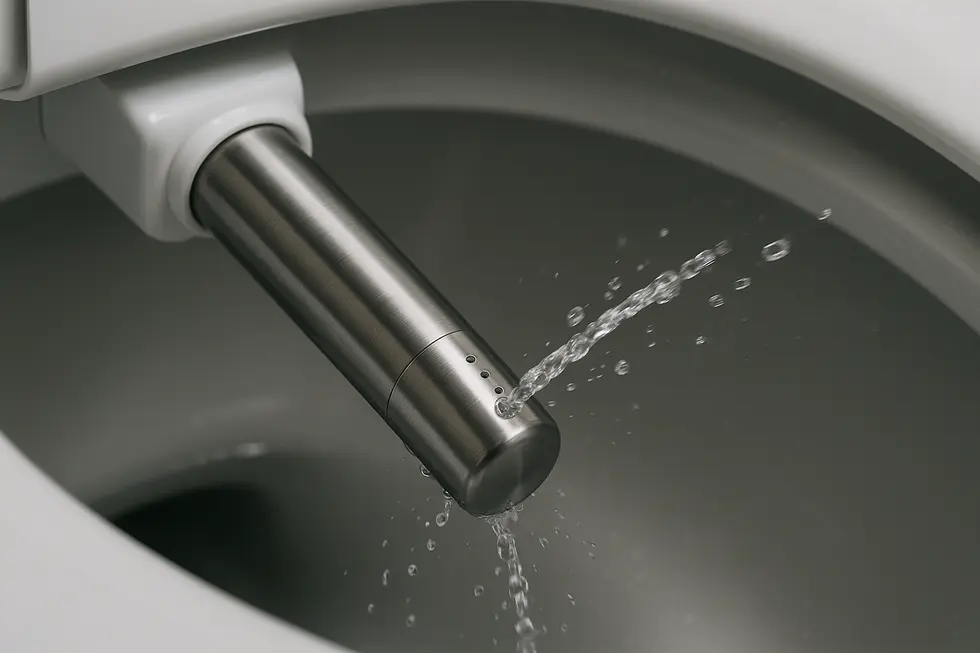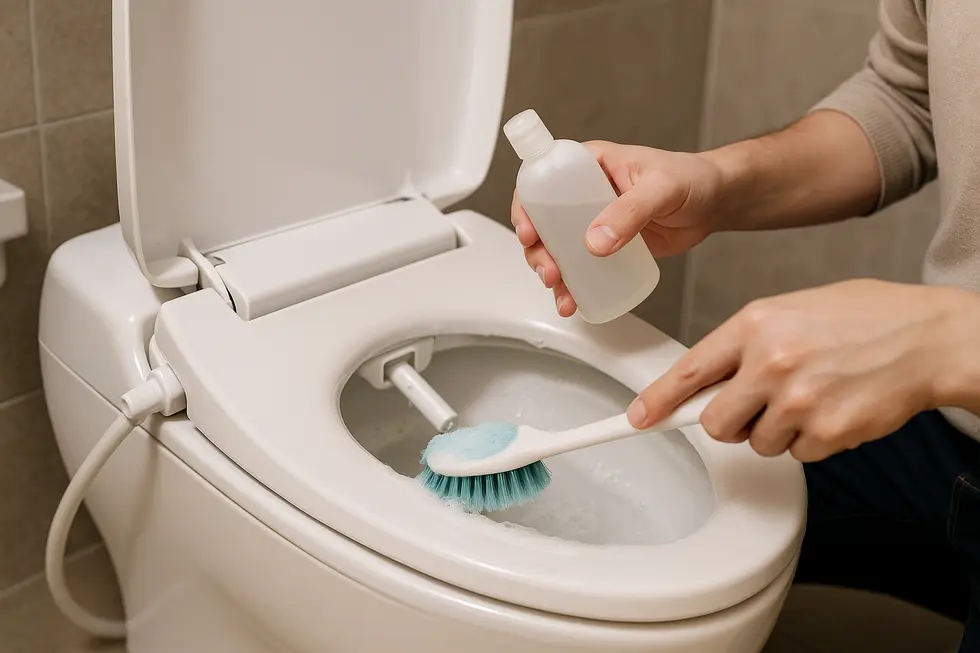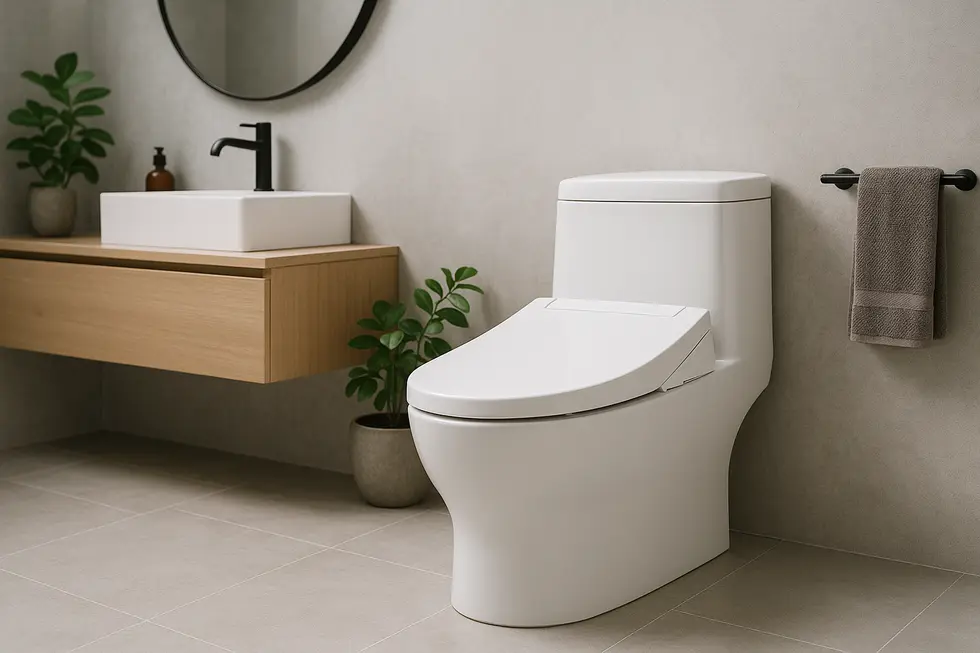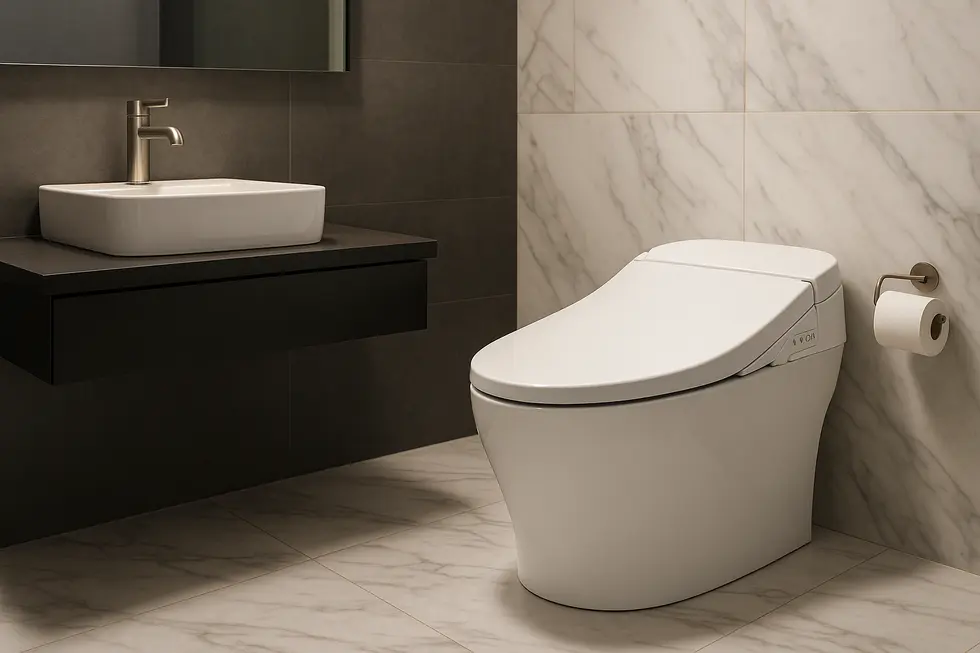Bidet Attachment
The Cutting Edge of Clean: Embracing Self-Cleaning Bidet Technology
In modern homes, maintaining impeccable hygiene in the bathroom often involves embracing the latest innovations. Self-cleaning bidets are emerging as a crucial component in many households, promising enhanced cleanliness with minimal effort. This article delves into the remarkable technology behind self-cleaning bidet nozzles, outlines crucial maintenance protocols to ensure hygiene standards, and explores the growing popularity and consumer benefits of adopting these advanced systems. Each chapter sheds light on the valuable features and practices that help families maintain a cleaner, more comfortable bathroom environment.
From Rinse Cycles to UV Sterilization: The Cutting-Edge Engineering Behind Self-Cleaning Bidet Nozzles

The heart of every self-cleaning bidet is its nozzle, a seemingly modest tube that now carries a remarkable amount of engineering. Current designs begin their work even before the user sits down. As soon as the lid sensor registers movement, an automatic pre-wash sends a quick burst of fresh water through the stainless-steel channel, flushing away dormant microbes and mineral film. After the wash cycle ends, the same purge repeats, ensuring the nozzle retracts bone-dry and sanitary.
What makes this rinse effective is the geometry inside the tube. Revised venturi-style chambers accelerate water so it scours the inner wall without increasing household pressure. Manufacturers pair that with anti-bacterial alloys or high-density plastics infused with silver ions; both resist biofilm, so each microscopic crevice becomes hostile territory for germs. Some premium units layer on ultraviolet LEDs. The light bathes the nozzle for a few seconds after every cycle, breaking down DNA strands that escaped the water flush. This passive sterilization adds no noise, no chemicals, and almost no energy draw, yet it cuts microbial counts dramatically.
Comfort and precision evolve alongside hygiene. Stepper motors now allow the nozzle head to travel millimeter by millimeter, mapping individual body shapes instead of relying on a single fixed angle. Users fine-tune spray width, oscillation speed, and pulse patterns via capacitive remotes or voice assistants. Behind those creature comforts lies a simple mechanical insight: by varying orifice size with a sliding sleeve, designers create everything from a soft mist to a focused massage without adding extra pumps.
Maintenance, once the dreaded downside of bidet ownership, has shrunk to a quarterly wipe-down. Removable faceplates click off without tools, exposing only food-grade silicone gaskets that tolerate mild soap. A growing number of models even house small detergent tablets that dissolve during rinse cycles, giving the entire bowl a gentle cleanse while never touching sensitive electronics.
For travelers curious about similar technology in a compact format, our portable bidet self-cleaning overview shows how these innovations scale down without sacrificing cleanliness. For a deeper dive into commercial implementations, see the manufacturer’s technical white paper at https://www.horow.com/product/t38-smart-bidet-toilet.
Keeping It Pristine: Maintenance Protocols and Hygiene Standards for Every Self-Cleaning Bidet

A self-cleaning bidet promises carefree sanitation, yet it still depends on sensible routines to stay immaculate and safe. The heartbeat of any schedule is water quality: built-in filters trap sediment that would otherwise lodge in the nozzles or foster biofilm, so mark the calendar for a replacement every four to six months. Couple this with a monthly nozzle inspection—look for mineral spots, run a manual rinse, and gently brush away residue with mild soap.
Exterior care is equally important. Wipe the seat, control panel, and surrounding porcelain with a soft cloth and non-abrasive cleanser. Avoid bleach or citrus solvents; their vapors corrode gaskets and may seep into electronic housings. Always unplug electric units first, then allow components to dry fully before restoring power. While the lid is lifted, trace the supply hose with your fingers; any moisture trail hints at a loose connection that can be hand-tightened before leaks damage cabinetry or flooring.
Modern bidets add their own safeguards. UV-sterilizing chambers bathe retracting nozzles in germicidal light, and bowls coated with photocatalytic glaze shed waste with every flush. If your model offers touch-free automatic flushing, enable it—minimising hand contact reduces cross-contamination and keeps chrome buttons spotless longer.
Compliance with plumbing codes is not optional. In regions following AS/NZS 3500.1 or EN 1717, a backflow prevention device such as an RPZ valve must be fitted to isolate the clean water supply from the bidet’s internal piping. When in doubt, consult a licensed plumber; improper installation may void warranties and, more critically, risk contaminating household drinking water. Choosing units that carry RoHS and EN 997 certifications ensures the plastics, electronics, and flushing performance meet internationally verified safety benchmarks.
For households exploring upgrades or retrofits, our best bidet attachments guide explains how to select models that simplify future maintenance with quick-release seats and tool-free filter access. Pair those design perks with the care rituals above, and a self-cleaning bidet will deliver spa-level freshness for years.
From Luxury Niche to Bathroom Essential: How Self-Cleaning Bidets Are Winning Hearts and Market Share

Once considered a spa-like indulgence, the self-cleaning bidet is rapidly becoming a mainstream fixture, and the sales numbers prove it. Analysts tracking the smart-toilet category—which bundles automated nozzles, heated seats, and app-level personalization—estimate compound annual growth between 8 % and nearly 19 % through the decade. Behind those upbeat projections sits a simple equation: better hygiene with less effort.
Consumers cite three primary benefits. First, automatic nozzle rinsing neutralizes the age-old worry that a bidet might harbour germs. A brief water flush before and after every cycle reassures users that the spray touching their skin is always fresh. Second, abandoning toilet paper in favour of water dramatically elevates cleanliness while trimming household spending and paper waste. Third, self-cleaning technology reduces scrubbing duties. Touch-free sanitation means fewer harsh chemicals, faster bathroom chores, and a longer service life for delicate spray components.
These advantages resonate most strongly in regions already attuned to wellness and smart-home convenience. Europe’s retrofit boom and North America’s appetite for premium bathroom remodels put both markets in the adoption lead. Yet feedback collected from early buyers also highlights hurdles. Nearly one-fifth of negative reviews mention leaks, and another 7 % complain about tricky assembly. Manufacturers that simplify installation kits and improve gasket reliability are poised to capture the next wave of converts.
Growth is not limited to fixed toilets. Compact, battery-free devices that tuck into luggage replicate the same self-rinsing nozzle concept, letting travellers maintain familiar hygiene rituals on the road. Interest in these portable travel bidets broadens the category from home renovation to everyday lifestyle accessory, reinforcing the core messaging of sustainability and personal comfort.
Ultimately, the success of self-cleaning bidets underscores a broader shift toward automated, touchless spaces. As smart speakers, lights, and thermostats quietly handle routine tasks, people now expect their bathrooms to do the same—delivering cleanliness in the background so they can simply press a button and feel refreshed. Industry observers believe that once reliability and installation become as effortless as the wash itself, adoption curves will steepen even further (see the latest global smart toilet market report: https://www.openpr.com/news/4106976/integrated-smart-toilet-market-is-thriving-worldwide-roca).
Final thoughts
As families continue to seek effective and efficient solutions for enhancing bathroom hygiene, self-cleaning bidets stand out as an ideal choice. By incorporating cutting-edge technology and offering substantial consumer benefits, these devices ensure a cleaner, more comfortable environment. From understanding the innovative designs to implementing proper maintenance protocols, embracing self-cleaning bidets enriches home life, bringing a new level of convenience and cleanliness.
Experience a new standard of clean with PEGABidet—designed for comfort, safety, and independence. Join thousands who trust us to make personal care simple and dignified. Contact us at contact@pegabidet.com.
About us
PEGABidet is a brand owned by L.A NEXTGEN LLC, based in California. We design intuitive, hygienic, and accessible bathroom solutions that prioritize safety, dignity, and independence. Our mission is to make personal care effortless and empowering for people at every stage of life.

